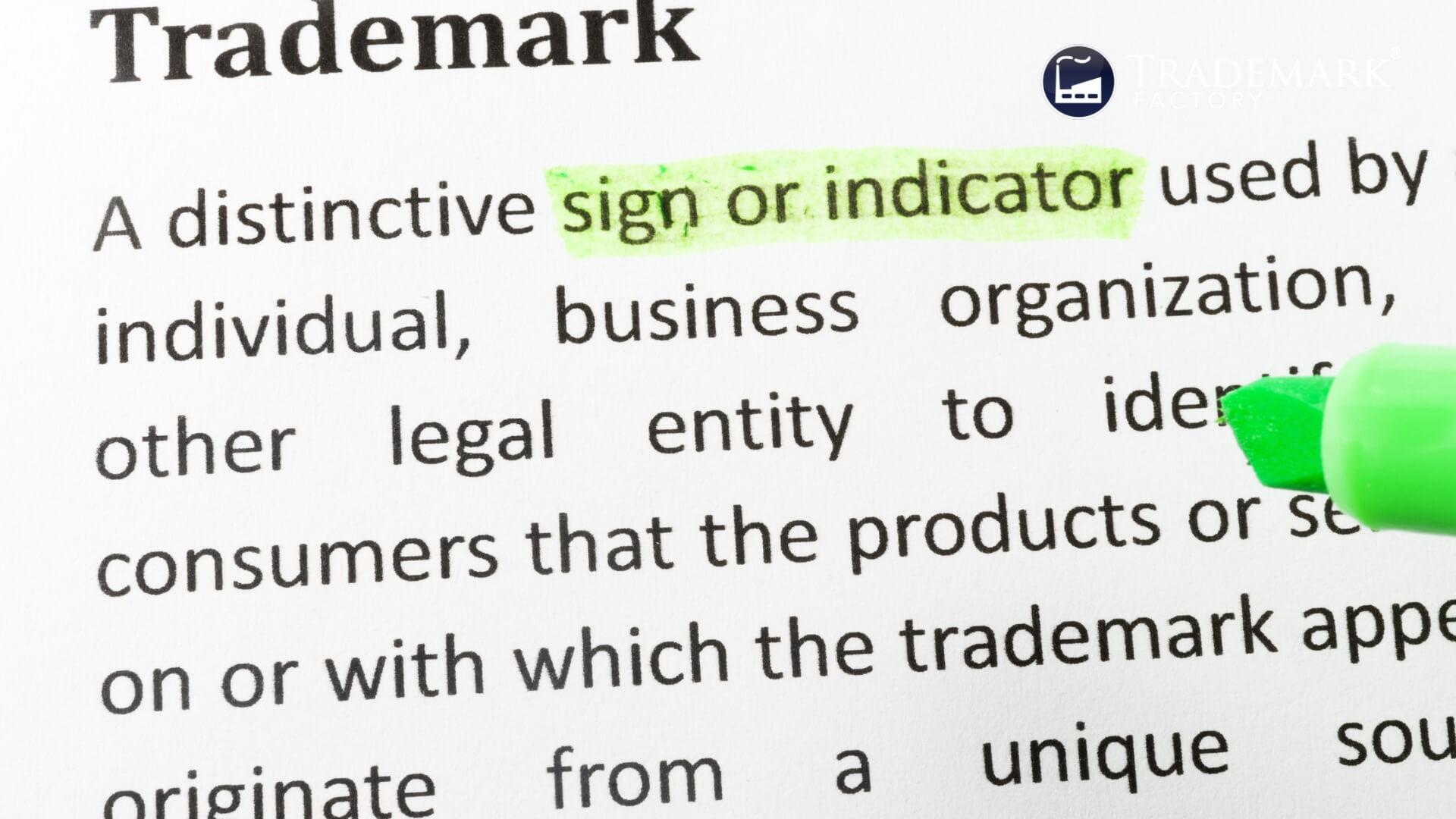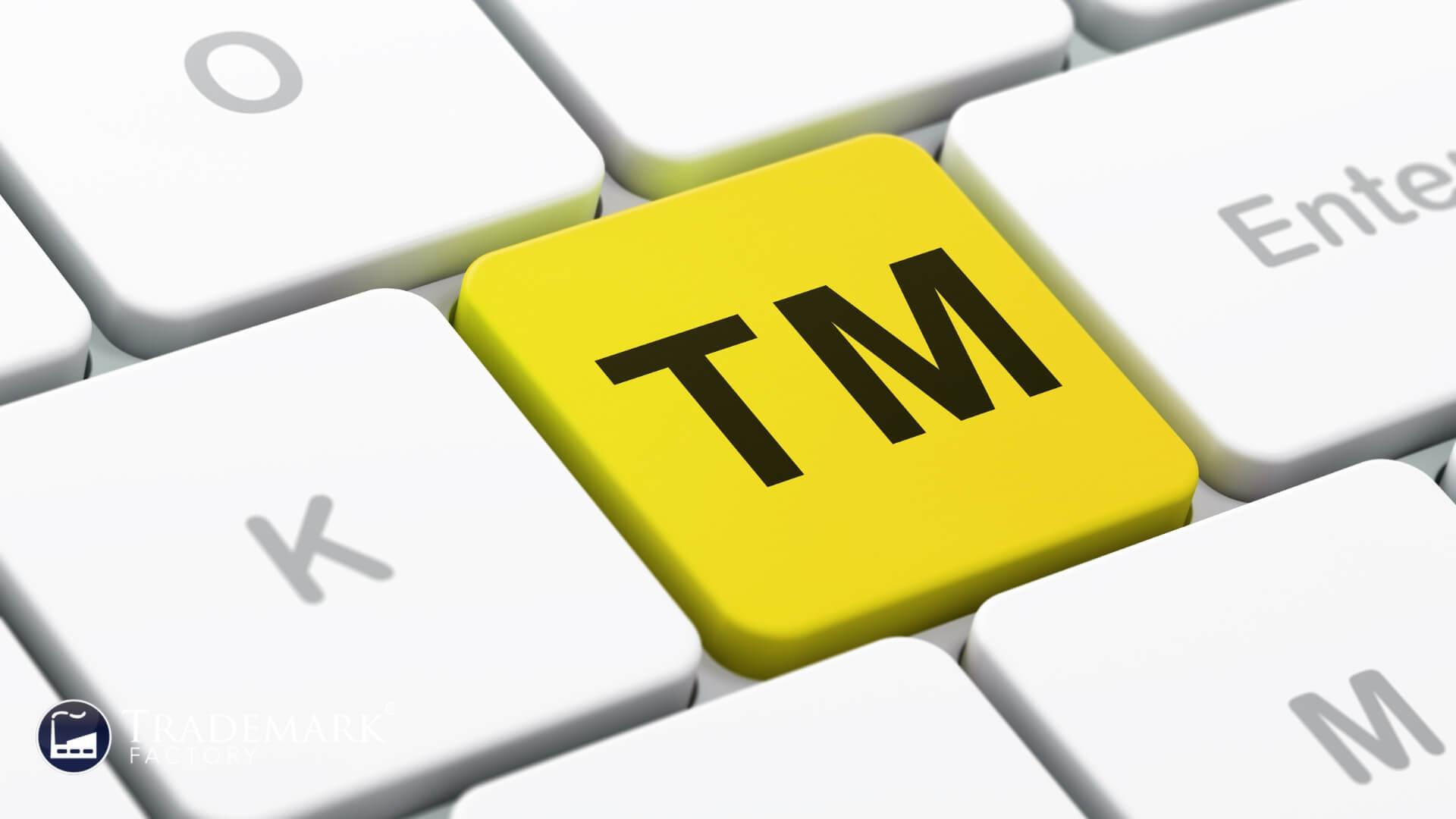Understanding Trademarks Definition & Purpose

In today's competitive business landscape, trademark purposes are to establish a strong brand identity. It has become an essential aspect for companies seeking to create a lasting impression on their target audience. One crucial element in building and maintaining a robust brand is the effective use of trademarks, which serve as distinctive symbols that not only represent the products or services offered but also help distinguish them from those provided by competitors. As such, understanding the legal definition, purpose, and benefits of trademark registration becomes vital for businesses aiming to secure their position in the market while protecting their intellectual property rights.
Trademarks play a pivotal role in empowering brand identity and ensuring business protection through various means such as fostering consumer loyalty, deterring potential infringement cases, and providing exclusive rights over specific goods or services. This article delves into the nuances of trademark eligibility criteria, distinguishing between trademarks and service marks, exploring different types of trademarks available, and discussing the duration of trademark protection. It also introduces trademarks and defining trademarks. Additionally, emphasis will be placed on conducting thorough trademark searches before registration to avoid potential conflicts with existing trademarks. By comprehending these aspects surrounding trademarks, businesses can strategically reinforce their branding efforts while safeguarding their interests in an increasingly interconnected global marketplace.
Legal Definition of a Trademark

A comprehensive analysis of trademark legal definition reveals that they encompass more than just a logo, serving a critical role in empowering brand identity and ensuring business protection. By understanding the legal definition of a trademark, one can appreciate the multifaceted nature of distinctive signs and their significance in differentiating products or services within competitive markets. This discussion aims to shed light on the importance of trademarks as legal instruments and their implications for businesses seeking to establish strong brand recognition while safeguarding their intellectual property rights.
Trademark: More than Just a Logo
In today's competitive market landscape, a well-crafted and distinctive trademark serves as much more than just a company logo; it plays an essential role in establishing brand identity and safeguarding business interests. Logo evolution, which involves the strategic modification of visual elements over time, helps businesses adapt to changing market trends while reinforcing their distinctiveness. A strong trademark influences brand perception by resonating with consumers on an emotional level and fostering a sense of loyalty or connection. As businesses expand their global footprint, international trademarks become crucial in maintaining consistent branding across borders and deterring potential infringers who may attempt to capitalize on the goodwill associated with a well-known mark. Infringement consequences can be severe and costly not only financially but also reputation-wise; therefore, diligently monitoring one's trademark usage is vital for preserving its value. Furthermore, trademark licensing agreements enable companies to legally grant third parties the rights to use their marks under specific conditions, thus enhancing their reach and generating additional revenue streams. By understanding these multifaceted aspects of trademarks beyond mere logos, companies can leverage them effectively towards building robust brand identities and ensuring long-term protection of their commercial endeavors – ultimately paving the way for discussing the purpose of trademark registration in greater depth.
The Purpose of Trademark Registration

The trademark registration purpose extends beyond the legal definition and encompasses an investment into a business's future. By securing exclusive rights to distinctive brand elements, businesses can protect their intellectual property, enhance brand recognition, and maintain a competitive edge in the market. This discussion aims to provide insights on the significance of registering trademarks as a strategic move for long-term business success and security.
Registering Trademarks: An Investment into Business Future
Securing a registered trademark serves as a valuable investment in the long-term success and market position of a company, providing essential safeguards for its intellectual property and enhancing overall competitiveness. Although initial trademark costs may be substantial, companies can avoid expensive infringement battles, mitigate counterfeiting risks, and protect their image from dilution by unauthorized usage. Additionally, international registration ensures that businesses maintain control over their brand across multiple jurisdictions, enabling them to capitalize on global expansion opportunities without losing their unique identity. Domain disputes can also be avoided with proper trademark registration, preventing potential cyber-squatting issues that could harm the online presence of the business. All these factors contribute to solidifying a resilient brand identity while ensuring robust protection against threats to a company's market position and reputation. This comprehensive approach to safeguarding one's intellectual property paves the way for understanding more nuanced distinctions such as those between trademarks and service marks – an important step in optimizing business strategies accordingly.
Trademark versus Service Mark: Spotting the Difference

Trademark vs service mark: this is crucial in determining the appropriate protection for an entity's intellectual property. Trademarks generally pertain to goods, while service marks are associated with services provided by a business or organization. By comprehending the nuances of these two classifications, businesses can ensure proper legal protection and enhance their brand identity in their respective markets.
When to Use a Trademark or a Service Mark
In determining whether to employ a trademark or a service mark, one must consider the nature of their offerings and the desired effect on brand perception and legal safeguards. Trademark misconceptions often arise from confusing these two distinct forms of intellectual property protection, with many businesses unaware that product-oriented enterprises typically utilize trademarks while those focused on services opt for service marks. In today's increasingly global economy, international trademarks play a crucial role in maintaining consistent branding across borders and deterring potential infringement consequences. As businesses expand into new markets, combating counterfeits becomes essential to protect their reputation and profits; thus, appropriate usage of trademarks or service marks is vital. Additionally, understanding the difference between these two types of marks can help prevent costly trademark disputes arising from confusion over ownership rights and infringement allegations. By carefully selecting the correct form of intellectual property protection based on the nature of their offerings, businesses can create strong brand identities while safeguarding their valued assets against potential threats. Moving forward, it is important to delve deeper into the role trademarks play in branding strategies to ensure maximum effectiveness in building consumer trust and loyalty.
The Role of Trademarks in Branding

Trademarks in branding serve as the cornerstone of brand identity, shaping public perception and fostering customer loyalty. By securing exclusive rights to distinctive symbols, names, or phrases associated with a company's offerings, trademarks effectively differentiate products and services from competitors in the marketplace. This crucial role underscores the importance of trademarks in developing and consolidating a strong brand presence that resonates with consumers and ensures long-term business success.
Trademarks: The Cornerstone of Brand Identity
A robust foundation for establishing a company's distinctiveness and market presence lies in the strategic use of trademarks, which not only fosters customer perception but also safeguards commercial interests. By preventing brand infringement and mitigating the risk of costly trademark disputes, companies can strengthen their position in the global marketplace. Furthermore, effective management of global trademarks enables businesses to expand their reach through trademark licensing agreements, thereby enhancing brand recognition and fostering consumer loyalty. Additionally, a well-protected brand identity serves as a proactive measure against counterfeit products, ensuring that customers associate the company with quality and authenticity. As such, it is evident that investing in a comprehensive trademark strategy not only empowers brand identity but also ensures long-term business protection—thus paving the way for exploring the benefits of trademark protection for businesses in greater depth.
Benefits of Trademark Protection for Businesses

Trademark protection benefits a critical factor in fostering business growth by providing both defensive and offensive advantages. By safeguarding a company's reputation through the prevention of unauthorized use, trademarks contribute to maintaining brand integrity and customer trust. Furthermore, trademark protection enables businesses to assert their rights against infringement, thereby preserving their competitive edge and strengthening market position.
How Trademark Protection Shields Business Growth
In today's competitive marketplace, safeguarding one's commercial growth necessitates the utilization of intellectual property rights, such as trademark protection, to deter potential infringers and maintain a strong reputation. Trademark infringements can significantly hinder business expansion by tarnishing brand image and diminishing consumer trust. Intellectual property rights empower companies to legally defend their unique brand identity against counterfeiters and imitators attempting to capitalize on their success. By enforcing trademark laws, businesses can proactively address brand imitation challenges and prevent counterfeiting from eroding market share or compromising product quality. Moreover, international trademark laws provide additional assurance for businesses seeking to scale globally by offering legal recourse in case of infringement across borders. Ultimately, securing robust trademark protection not only safeguards a company's assets but also enables them to thrive in an increasingly competitive landscape. However, it is essential for businesses to recognize that while trademarks offer valuable defense mechanisms, they are not impervious; understanding the limitations of trademark protection is crucial for ensuring long-term resilience and adaptability in the face of dynamic market conditions.
The Limitations of Trademark Protection

Navigating the grey areas of trademark protection limitations presents a complex and challenging landscape for businesses seeking to safeguard their brand identity. It is essential to recognize the limitations and potential scenarios where trademark rights may not apply, thereby avoiding costly legal disputes or unintentional infringement upon others' intellectual property. By exploring these intricacies and understanding the boundaries of trademark law, businesses can effectively strategize their branding efforts while mitigating risks associated with intellectual property disputes.
Navigating the Grey Areas of Trademark Protection
Exploring the nuances and complexities of trademark protection can be a challenging yet essential task for businesses aiming to safeguard their unique intellectual property. Navigating the grey areas of trademark protection involves understanding the permissible usage of others' trademarks, such as 'fair use,' and being aware of potential trademark pitfalls to avoid infringement consequences. As businesses expand globally, it is crucial to consider international trademarks that provide protection across multiple jurisdictions, ensuring that brand identity remains consistent and protected worldwide. Properly defending trademarks can deter competitors from engaging in brand imitation or unauthorized use of another's intellectual property while still allowing for fair competition within the market. It is essential for business owners to stay informed about these complexities in order to maintain strong brand identity and minimize potential legal disputes. With this knowledge in hand, companies can better understand the criteria for trademark eligibility and navigate successfully through the process of securing their valuable intellectual property rights.
The Criteria for Trademark Eligibility

In order to create a trademark eligibility criteria that effectively supports business strategy, it is essential to consider key factors such as distinctiveness, functionality, and legality. A strong and distinctive trademark can significantly contribute to brand identity and market positioning while avoiding potential infringement issues. By understanding the requirements for trademark eligibility, businesses can make informed decisions on crafting trademarks that align with their strategic objectives and provide robust protection in the competitive marketplace.
Crafting an Eligible Trademark: Key Considerations
Delving into the crucial aspects of developing a fitting and legally compliant mark enables companies to fortify their market presence and safeguard their commercial interests. To evade trademark pitfalls, it is essential for businesses to understand the risks associated with infringement consequences, the nuances of international trademarks, potential domain disputes, and common misconceptions surrounding trademark creation. A successful trademark should possess distinctiveness while avoiding descriptiveness, ensuring that it resonates with target audiences while providing an effective defense against competition. In addition to these considerations, enterprises must remain vigilant in monitoring relevant markets for potential infringements or conflicts that could compromise their brand identity or business protection efforts. Recognizing these elements underscores the importance of conducting a thorough trademark search as part of devising an eligible and enforceable branding strategy.
The Importance of Conducting a Trademark Search

A trademark search importance is a crucial initial step in the registration process, ultimately ensuring secure and successful trademark protection. By engaging in a comprehensive search, applicants can effectively identify potential conflicts with existing trademarks, thereby circumventing costly legal disputes and strengthening their brand's identity. Moreover, this proactive measure not only reinforces the validity of the proposed trademark but also fosters an environment that promotes fair competition within the marketplace.
Trademark Search: The First Step towards Secure Registration
Initiating the registration process with a thorough trademark search serves as a crucial step towards safeguarding one's distinctive brand assets and ensuring legal security. By employing well-planned search strategies, businesses can avoid common trademark pitfalls and minimize the risk of infringement consequences that may arise from overlooking already registered global trademarks. A comprehensive analysis of existing marks enables companies to make informed decisions when selecting their unique identifiers, greatly reducing potential conflicts and costly litigation in the future. Additionally, this initial investigation paves the way for a smoother registration process by providing valuable insights into prevailing industry trends and competitor branding tactics. As businesses continue to strengthen their market presence through effective brand identity management, understanding the types of trademarks available becomes an essential component in achieving sustainable growth and protection.
The Types of Trademarks Available

Selecting the appropriate types of trademark for a business is crucial to ensure effective branding and legal protection. Various types of trademarks, such as word marks, logos, and sound marks, cater to diverse brand identity needs while safeguarding intellectual property rights. Analyzing the specific requirements of a business and understanding the nature of its target market can guide entrepreneurs in determining the most suitable trademark category for their venture.
Choosing the Right Type of Trademark for Your Business
Determining the optimal trademark category for a company's unique needs is critical in bolstering its market presence and safeguarding its intellectual property. Several factors must be taken into consideration when selecting the most suitable type of trademark, such as 1) brand distinctiveness, which refers to how easily consumers can identify and differentiate the brand from competitors; 2) infringement prevention, which involves evaluating whether a specific trademark provides adequate protection against unauthorized use by third parties; 3) international trademarks, which may be necessary if the company plans to expand or conduct business overseas; and 4) unregistered rights, which are essential for businesses that rely on common law protections rather than registering their trademarks formally. By carefully weighing these aspects and understanding their implications across various industry sectors, businesses can make informed decisions and choose an appropriate trademark type that enhances their brand identity while providing robust legal protection. This strategic approach will ultimately strengthen a company's position within its target audience who seek a sense of belonging with brands they trust. The next aspect to consider in this process is understanding the duration of trademark protection and how it impacts a company's long-term strategy.
The Duration of Trademark Protection

The duration of trademark protection is a crucial aspect in maintaining the integrity and value of a brand, as it ensures continued legal rights against infringement and brand dilution. To sustain this protection, trademark owners must engage in timely renewal processes and adhere to specific requirements set forth by governing bodies. Understanding these renewal procedures and their implications for long-term brand security can provide significant advantages for businesses looking to thrive in an increasingly competitive market landscape.
Sustaining Trademark Protection: Renewals and Beyond
To maintain the longevity of your intellectual property rights, it is crucial to understand the process of renewals and adhere to the necessary requirements. Trademark expiration can occur if proper renewal procedures are not followed, which may lead to infringement consequences and leave a brand vulnerable to misuse by competitors. In addition to national protection, businesses should also consider international protection in order to safeguard their trademarks in foreign markets where potential infringements might occur. Furthermore, engaging in opposition proceedings can serve as a proactive measure for defending one's trademark against possible conflicts with other parties who seek registration of similar marks that may cause confusion among consumers. Lastly, it is essential for businesses to recognize the growing importance of non-traditional trademarks such as sounds, smells, or colors that contribute significantly to a company's distinct brand identity and product differentiation strategy. By staying informed about these elements and ensuring timely renewals along with diligent enforcement efforts both domestically and internationally, companies can effectively sustain their trademark protection while fostering an enduring sense of brand loyalty among consumers.
Frequently Asked Questions

How can a business effectively enforce its trademark rights against unauthorized use or infringement by third parties?
Effectively enforcing trademark rights against unauthorized use or infringement by third parties necessitates a comprehensive approach encompassing multiple strategies. Infringement detection serves as the first line of defense, requiring businesses to proactively monitor and identify instances where their marks are being used without permission. Upon discovering such instances, issuing a cease and desist letter often proves effective in resolving disputes without resorting to costly litigation. However, should legal action become necessary, devising a well-planned litigation strategy remains crucial for ensuring successful outcomes in court. Additionally, businesses can explore licensing agreements to grant third parties limited authorization for using their trademarks under specific conditions, thereby fostering mutually beneficial relationships while safeguarding their brand identity. Lastly, with the rise of digital platforms and e-commerce, online enforcement has become increasingly critical; monitoring domain names and social media accounts is essential for maintaining control over one's intellectual property in the digital realm.
What is the process and cost involved in registering a trademark in multiple countries or regions?
The process of registering a trademark in multiple countries or regions typically involves international registration through the Madrid Protocol, a centralized system that facilitates protection across numerous jurisdictions. Trademark fees associated with this procedure depend on various factors, such as the number of countries targeted and the specific classes of goods or services covered. Regional filing options may also be available for businesses seeking to register trademarks within certain economic areas, such as the European Union or African Intellectual Property Organization. Prior to initiating any international registration, it is advisable to conduct a thorough trademark search to identify potential conflicts or obstacles that might arise during the application process. This comprehensive approach ensures efficient management of resources and maximizes the likelihood of successful registrations in desired markets.
Can a trademark be transferred or sold to another business or individual, and if so, what is the process for doing so?
Trademark assignment, a legal mechanism for transferring ownership of a registered mark from one entity to another, allows businesses and individuals to sell or otherwise convey their trademark rights. This process typically involves the execution of an assignment agreement delineating the parties involved, scope of transferred rights, and consideration offered. Moreover, licensing agreements may provide an alternative means for granting limited usage rights without relinquishing full ownership. Valuation factors such as market demand, brand strength, and potential revenue streams significantly influence transaction negotiations. Additionally, dispute resolution clauses incorporated within these contracts serve to address any conflicts arising from the interpretation or enforcement of agreed-upon terms, ensuring a seamless transition in the event of trademark ownership change.
How can businesses monitor and maintain their trademark registrations to ensure continued protection and avoid potential issues with abandonment or cancellation?
Trademark maintenance, a critical aspect of safeguarding intellectual property rights, necessitates vigilant trademark monitoring and timely registration renewal for enduring protection against potential infringement. Businesses must employ systematic strategies to detect unauthorized usage or potential conflicts with their trademarks, enabling swift action in defense of their brand identity. Furthermore, adherence to statutory deadlines for filing affidavits of use and renewal applications is essential to prevent inadvertent abandonment or cancellation of trademark registrations. In instances where trademarks face abandonment due to noncompliance with regulatory requirements, businesses may explore options for reviving abandoned trademarks by demonstrating continued use or intent to resume use in commerce. Ultimately, proactive measures toward infringement prevention and diligent upkeep of trademark registrations contribute significantly to reinforcing a company's brand identity and fortifying its competitive position in the marketplace.
What are some examples of trademarks that have become generic over time, and how can businesses avoid this scenario with their own trademarks?
Generic trademarks, such as aspirin, escalator, and thermos, exemplify instances wherein once-protected brand identities have become synonymous with the products themselves. To circumvent this undesirable outcome and preserve their brand identity, companies must employ a multifaceted approach that encompasses trademark dilution prevention tactics, proactive brand identity preservation strategies, comprehensive trademark education programs for employees and consumers alike, and constant vigilance in avoiding genericization of their intellectual property. By adopting these measures in concert with one another, businesses can more effectively safeguard their valuable trademarks against erosion while fostering a sense of loyalty and belonging among their consumer base.
Conclusion

In conclusion, trademarks play a crucial role in empowering brand identity and ensuring business protection. They provide legal rights to businesses, preventing competitors from using similar marks that may cause confusion among consumers. Furthermore, trademarks contribute to the establishment of a strong brand image, fostering customer loyalty and trust.
It is imperative for businesses to understand the importance of trademark registration and adhere to the eligibility criteria in order to reap its benefits. Conducting thorough trademark searches prior to registration can mitigate potential conflicts and facilitate long-term brand success.
Subscribe to Trademark Wednesdays, our weekly newsletter where we'll send fun and informative trademarking topics straight to your inbox.




